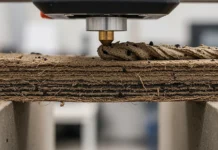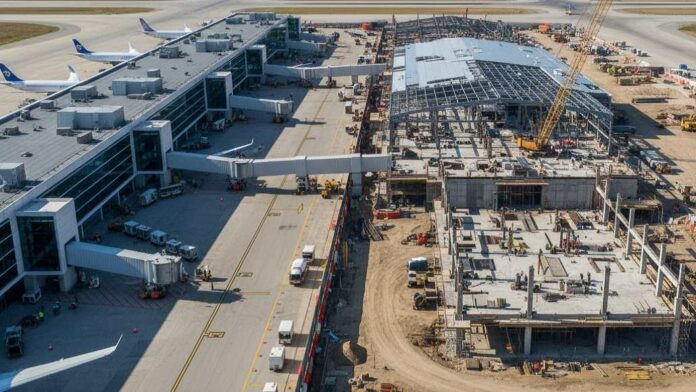Designing for Wellness and Comfort in Terminal Interiors
The evolution of terminal interior design has shifted dramatically from purely functional spaces to environments that actively promote wellness and comfort in terminal interiors, recognizing the profound impact that built environments have on human health, productivity, and overall experience. Modern terminals serve millions of passengers annually, creating unique opportunities and responsibilities to design spaces that support physical and mental wellbeing while maintaining operational efficiency and aesthetic appeal.
Contemporary research in environmental psychology and building performance demonstrates that terminal interiors significantly influence stress levels, wayfinding efficiency, and overall satisfaction among travelers and workers alike. The integration of wellness-focused design principles creates environments that not only meet functional requirements but actively contribute to positive health outcomes and enhanced user experiences.
The growing emphasis on passenger comfort and employee wellbeing reflects broader societal recognition of architecture’s role in supporting human health. Terminal interiors that prioritize wellness create competitive advantages while contributing to broader public health objectives and demonstrating corporate responsibility in facility design and operation.
Understanding the Psychology of Terminal Spaces
Terminal environments present unique psychological challenges, where travelers experience heightened stress levels due to time pressures, security concerns, and unfamiliar surroundings. Wellness and comfort in terminal interiors must address these specific stressors while creating environments that feel welcoming, secure, and supportive rather than institutional or overwhelming.
Spatial psychology research indicates that certain design elements consistently reduce stress and improve mood among building occupants. Natural light, access to views, comfortable seating arrangements, and logical circulation patterns all contribute to positive psychological responses that enhance the overall terminal experience for both passengers and staff.
The scale and complexity of modern terminals can create feelings of disorientation and anxiety, particularly among infrequent travelers or those with mobility limitations. Interior design strategies that prioritize wayfinding, provide clear sight lines, and create human-scaled spaces within larger environments help mitigate these psychological challenges while improving functional performance.
Biophilic Design Integration
Biophilic design principles recognize the innate human connection to nature and incorporate natural elements into interior environments to promote wellness and reduce stress. Terminal interiors benefit significantly from biophilic approaches that introduce vegetation, natural materials, water features, and nature-inspired patterns and textures.
Living walls and interior gardens provide visual interest while improving air quality and creating calming environments that counteract the sterile atmosphere often associated with transportation facilities. These installations require careful planning for maintenance access and environmental control but provide substantial benefits for user experience and wellness outcomes.
Natural materials such as wood, stone, and other organic textures create warmth and visual interest while connecting occupants to natural environments. These materials must be selected for durability and maintenance requirements while providing the tactile and visual qualities that support wellness objectives.
Lighting Design for Health and Performance
Lighting represents one of the most critical elements in terminal interior design, affecting everything from circadian rhythms and sleep patterns to task performance and mood regulation. Wellness and comfort in terminal interiors require sophisticated lighting strategies that accommodate diverse activities while supporting human health and biological functions.
Natural light integration provides the foundation for healthy lighting environments, with daylight exposure supporting circadian rhythm regulation and vitamin D synthesis while reducing dependence on artificial lighting systems. Terminal design must maximize access to natural light while managing glare, heat gain, and visual comfort through advanced glazing systems and shading strategies.
Dynamic lighting systems that adjust color temperature and intensity throughout the day can help travelers manage jet lag and maintain healthy sleep patterns while supporting staff productivity and wellbeing. These systems require sophisticated controls and integration with building management systems but provide significant benefits for user comfort and energy efficiency.
Circadian Lighting Applications
Circadian lighting systems recognize the biological importance of light exposure patterns and adjust artificial lighting to support natural circadian rhythms. These systems can be particularly beneficial in terminals where travelers cross time zones and experience disrupted sleep patterns due to travel schedules.
The implementation of circadian lighting requires careful planning and coordination with architectural design, as the systems must provide adequate illumination for safety and security while supporting biological functions. Color-tunable LED systems provide the flexibility necessary for effective circadian lighting while maintaining energy efficiency and operational reliability.
Acoustic Comfort and Sound Management
Terminal environments generate significant acoustic challenges through aircraft noise, passenger conversations, mechanical systems, and public address announcements. Effective acoustic design creates environments that support communication and relaxation while managing noise levels that can contribute to stress and fatigue.
Sound masking systems and acoustic zoning strategies help create quieter areas within terminals while maintaining necessary communication capabilities for safety and operations. These systems must balance privacy and comfort with security and operational requirements, creating environments that feel peaceful without compromising functionality.
Material selection plays a crucial role in acoustic performance, with sound-absorbing surfaces and strategic placement of acoustic treatments helping to control reverberation and reduce noise levels. Interior finishes must balance acoustic performance with aesthetic objectives, durability requirements, and maintenance considerations.
Quiet Zones and Relaxation Spaces
Designated quiet zones within terminals provide respite from the general activity and noise levels while offering spaces for relaxation, work, or rest. These areas require careful acoustic isolation and design to create environments that feel separated from the main terminal activities while remaining accessible and secure.
The design of relaxation spaces should incorporate comfortable seating, appropriate lighting, and acoustic isolation while maintaining visual connections to terminal activities for security and wayfinding purposes. These spaces provide significant value for travelers with extended layovers or those seeking quiet environments for work or rest.
Indoor Air Quality and Environmental Health
Terminal interiors must maintain excellent indoor air quality to support occupant health while managing the challenges of high occupancy, diverse activities, and connection to exterior environments through frequent door openings and ventilation requirements. Air quality directly impacts cognitive performance, respiratory health, and overall comfort levels.
Advanced ventilation systems provide fresh air while filtering contaminants and managing humidity levels that affect both comfort and health outcomes. These systems must balance energy efficiency with air quality objectives while accommodating variable occupancy levels and diverse space requirements throughout terminal facilities.
Material selection significantly impacts indoor air quality through off-gassing of volatile organic compounds and other chemical emissions. Low-emission materials and finishes support healthy indoor environments while meeting durability and performance requirements for high-traffic commercial applications.
Pathogen Control and Health Safety
Recent global health events have heightened awareness of pathogen transmission in public spaces, making air quality management and surface hygiene increasingly important considerations in terminal interior design. UV air purification systems, antimicrobial surfaces, and enhanced ventilation strategies all contribute to healthier terminal environments.
Touchless technologies and material selection that supports easy cleaning and disinfection help maintain hygienic environments while reducing maintenance requirements and supporting public health objectives. These considerations must be integrated into design decisions while maintaining aesthetic and functional performance requirements.
Ergonomic Seating and Rest Areas
Seating design in terminal interiors must accommodate diverse user needs, extended waiting periods, and varying physical capabilities while supporting comfort and wellness objectives. Ergonomic principles guide seating selection and arrangement to reduce fatigue and support healthy postures during extended use.
Variety in seating options accommodates different user preferences and needs, from individual seats for privacy to group seating areas that support social interaction. Accessible seating options must be integrated throughout terminal areas while providing equal access to amenities and services.
Rest and relaxation areas provide opportunities for travelers to recuperate during extended layovers while supporting overall wellbeing and satisfaction. These areas require careful design to balance privacy with security requirements while providing comfortable environments for rest and relaxation.
Universal Design Principles
Universal design approaches ensure that terminal interiors accommodate users with diverse abilities and needs without requiring specialized accommodations. These principles create more inclusive environments while often improving usability for all occupants through better wayfinding, accessibility, and comfort features.
Flexible seating arrangements and multiple height work surfaces accommodate users with different physical requirements while supporting various activities from work and dining to rest and social interaction. These design strategies create more welcoming and functional environments for all terminal users.
Technology Integration for Enhanced Comfort
Smart building technologies enable dynamic control of environmental conditions, lighting, and other comfort parameters based on occupancy patterns, time of day, and user preferences. These systems support wellness objectives while improving energy efficiency and operational performance.
Mobile applications and digital interfaces provide users with control over their immediate environment, including lighting, temperature, and entertainment options in designated areas. These technologies enhance user satisfaction while providing data on usage patterns that support ongoing optimization of terminal environments.
Environmental monitoring systems track air quality, noise levels, and other comfort parameters in real-time, enabling facility managers to maintain optimal conditions while identifying areas requiring attention or improvement. These systems support both immediate comfort and long-term wellness objectives through data-driven facility management.
Personalized Environmental Control
Advanced building systems enable some degree of personalized environmental control, allowing users to adjust lighting, temperature, and other parameters in their immediate vicinity. These systems require sophisticated controls and infrastructure but provide significant improvements in user satisfaction and comfort.
Integration of personal devices with building systems enables customized environmental settings while providing users with information about their environment and available amenities. These technologies create more responsive and user-friendly terminal environments while supporting individual comfort preferences.
Wayfinding and Spatial Organization
Clear wayfinding systems reduce stress and improve user experience by helping travelers navigate complex terminal environments efficiently and confidently. Effective wayfinding integrates architectural design, signage systems, and digital technologies to create intuitive navigation experiences.
Spatial organization principles create logical flow patterns and clear hierarchies that support natural movement through terminal environments. Open sight lines, landmark features, and consistent design languages help users understand terminal layout and find necessary services and amenities efficiently.
Digital wayfinding systems and mobile applications provide real-time navigation assistance while adapting to changing conditions such as gate changes, delays, or temporary closures. These systems complement physical wayfinding elements while providing enhanced functionality and accessibility features.
Inclusive Wayfinding Solutions
Wayfinding systems must accommodate users with diverse abilities and needs, including visual, auditory, and cognitive impairments. Multi-sensory wayfinding approaches incorporate tactile, auditory, and visual elements to ensure effective navigation for all users.
Cultural and linguistic diversity requires wayfinding systems that communicate effectively across language barriers while providing clear visual and symbolic communication. These systems support international travel while creating more inclusive terminal environments.
Wellness Amenities and Support Services
Modern terminals increasingly incorporate dedicated wellness amenities such as fitness facilities, meditation spaces, and health services that support traveler wellbeing during extended stays. These amenities create competitive advantages while demonstrating commitment to user health and satisfaction.
Food service areas that provide healthy dining options support nutritional wellness while accommodating diverse dietary requirements and preferences. The design of these spaces should promote healthy eating behaviors while creating pleasant dining environments that contribute to overall terminal ambiance.
Rest and sleep facilities, including sleeping pods, quiet zones, and shower facilities, support traveler wellbeing during extended layovers while providing revenue opportunities for terminal operators. These facilities require careful design to balance privacy, security, and accessibility requirements.
Family and Child-Friendly Features
Terminal interiors must accommodate families with children through specialized play areas, family rest rooms, and child-friendly amenities that reduce stress for traveling families. These features create more welcoming environments while addressing the specific needs of family travelers.
Nursing and childcare facilities provide essential support services while creating more inclusive terminal environments that accommodate diverse user needs. These spaces require careful design for privacy, hygiene, and accessibility while maintaining security and operational requirements.
The integration of wellness and comfort principles into terminal interior design represents a fundamental shift toward human-centered environments that prioritize occupant health and satisfaction alongside operational efficiency. As terminals continue to evolve, the successful implementation of these principles will differentiate leading facilities while contributing to broader public health and wellness objectives through thoughtful, evidence-based design approaches that recognize the profound impact of built environments on human experience and wellbeing.































